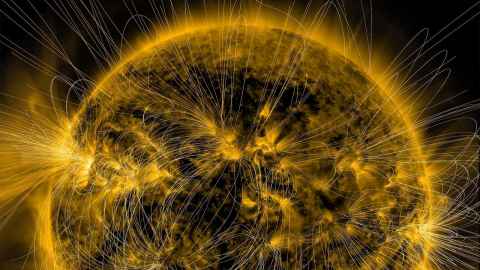Public lecture: the Sun’s magnetic field – sunspots and cycles
16 March 2020
The Sun’s magnetic field exists on a very wide variety of scales, from sunspots down to small ‘bright points’ between the surface cellular motions, called solar granulation.

Sunspots have been observed for many centuries but their association with magnetic fields has only been recognised more recently.
The frequency and location of sunspots varies on an 11-year cycle which is much shorter than any other solar evolution timescale.
In addition, there have been interruptions to this cycle, such as that which occurred in the early 17th Century and which may have been associated with a cold climate in the northern hemisphere, sometimes known as the ‘little ice age’.
While some broad elements of this phenomenon are understood, a detailed explanation still eludes scientists. Even modern supercomputers have so far not been capable of solving model problems that accurately capture the observed behaviour.
Professor Michael Proctor is a visiting Hood Fellow to the University and will give a public lecture on the Sun’s magnetic field on 24 March. He is a world-leading researcher in applied mathematics and astrophysics and is currently Provost of King’s College at the University of Cambridge and Professor Emeritus of Astrophysical Fluid Dynamics in the Department of Mathematics and Theoretical Physics. He is a Fellow of the Royal Society London.
This free public lecture will be held on Tuesday 24 March at 5.30pm in Physics Lecture Theatre 2, Science Centre, Building 303, 23 Symonds Street.
Media contact
Anne Beston | Media adviser
DDI 09 923 3258
Mob 021 970 089
Email a.beston@auckland.ac.nz